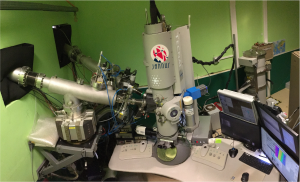
The European INNUMAT project (Innovative Structural Materials for Fission and Fusion) will start on September 1, 2022 for a period of 4 years within the framework of Horizon EURATOM. It brings together 36 European academic and industrial partners with the aim of developing innovative materials for future nuclear energy components and structures, directing them towards potential qualification for fission (lead-cooled fast reactors and molten salt reactors), but also for the DEMO fusion reactor.
High entropy alloys (HEA), a new class of materials with vast development potential and very promising properties, as well as austenitic alumina-forming stainless steels (AFA), already identified as potential structural materials for Generation IV fission reactors and small modular reactors are under development. Other advanced material solutions are also considered, in particular innovative coatings of 15-15Ti steels for lead-cooled fast reactors (among others MYRRHA and ALFRED), and coated EUROFER ferritic steel and steel reinforced with oxide dispersion (ODS) for melting (DEMO).
As part of this project, two researchers from the Energy and Environment division of IJCLab, Aurélie Gentils and Stéphanie Jublot-Leclerc, will study the behavior under irradiation of new innovative coatings of 15Ti-Ti steels synthesized by an Italian team from IIT, by carrying out in situ Transmission Electron Microscopy experiments with ion beams delivered by the ARAMIS accelerator of the JANNuS-SCALP platform. These results will be compared in particular with those obtained after neutron irradiation at another partner, and will make it possible to better understand the damage mechanisms under irradiation of these materials envisaged for future reactors.
The Materials and irradiation research theme of the Energy and Environment Pole is here.





